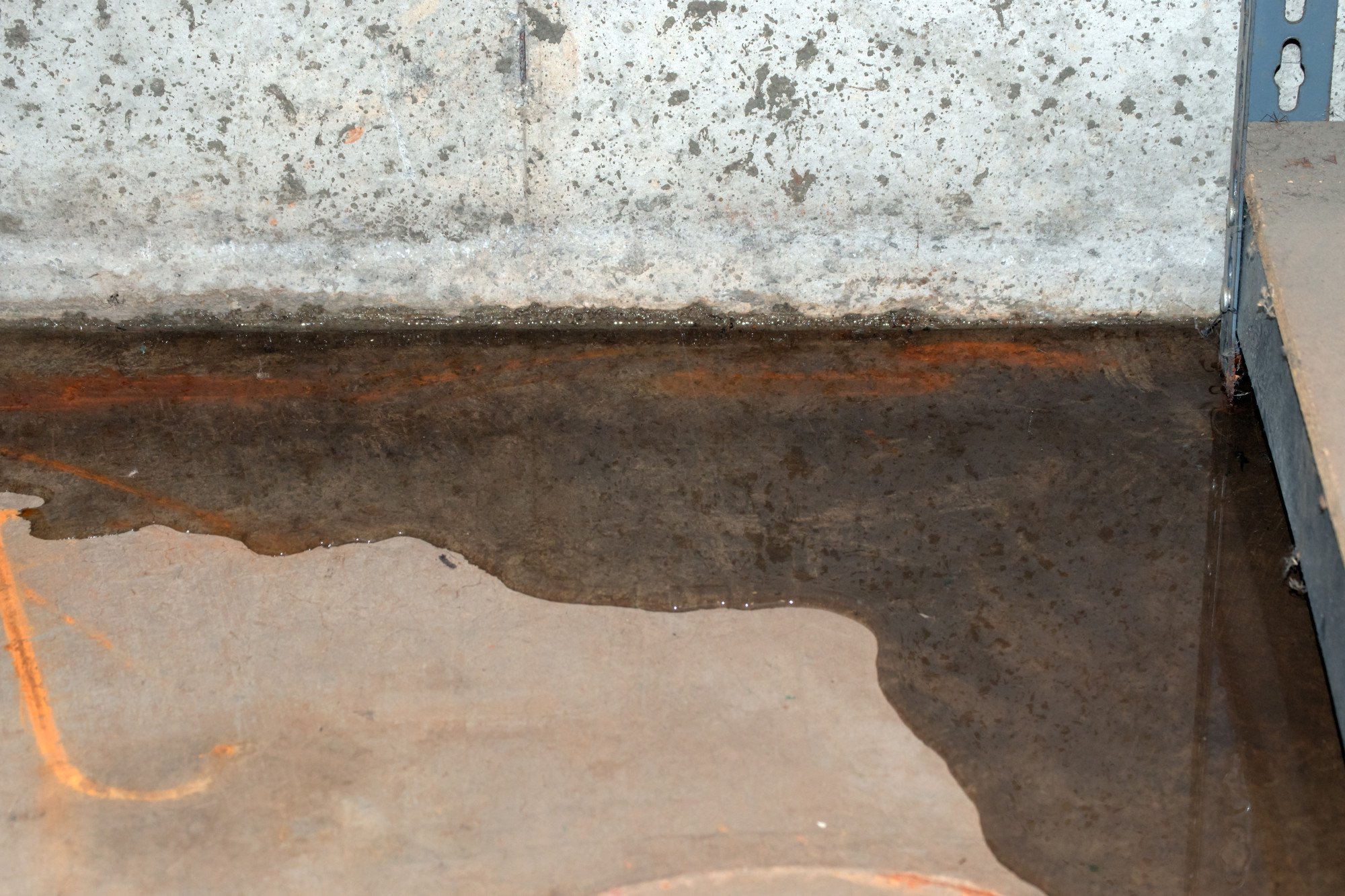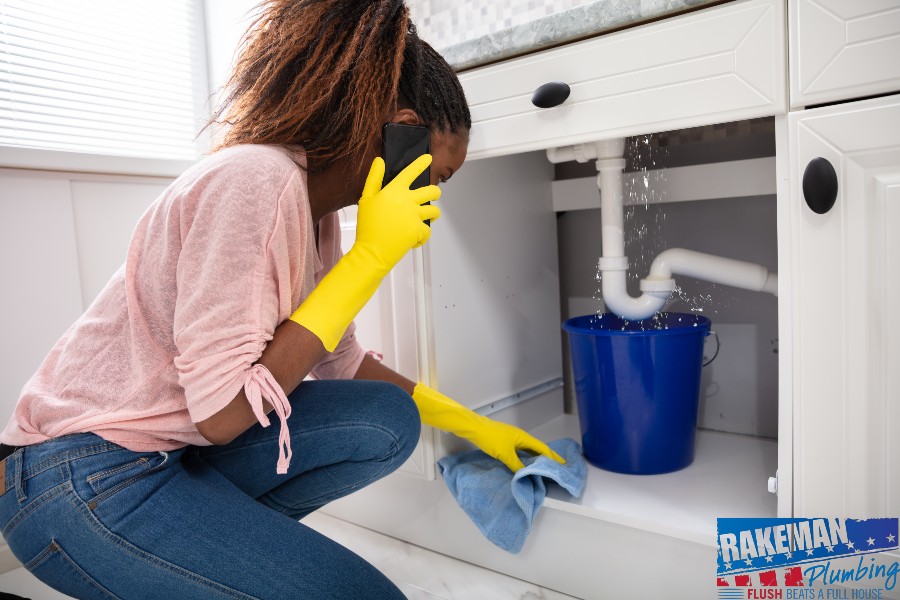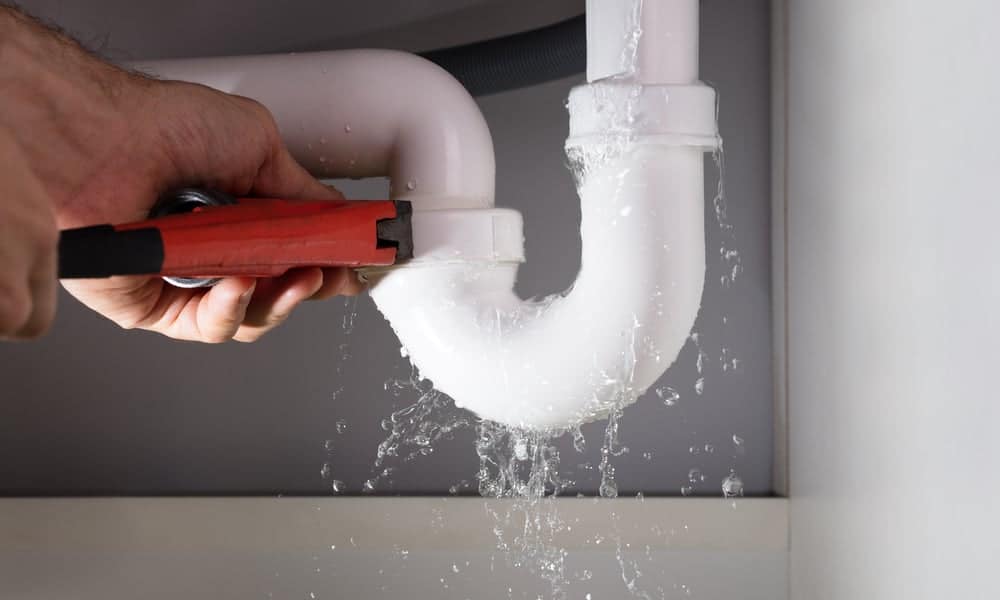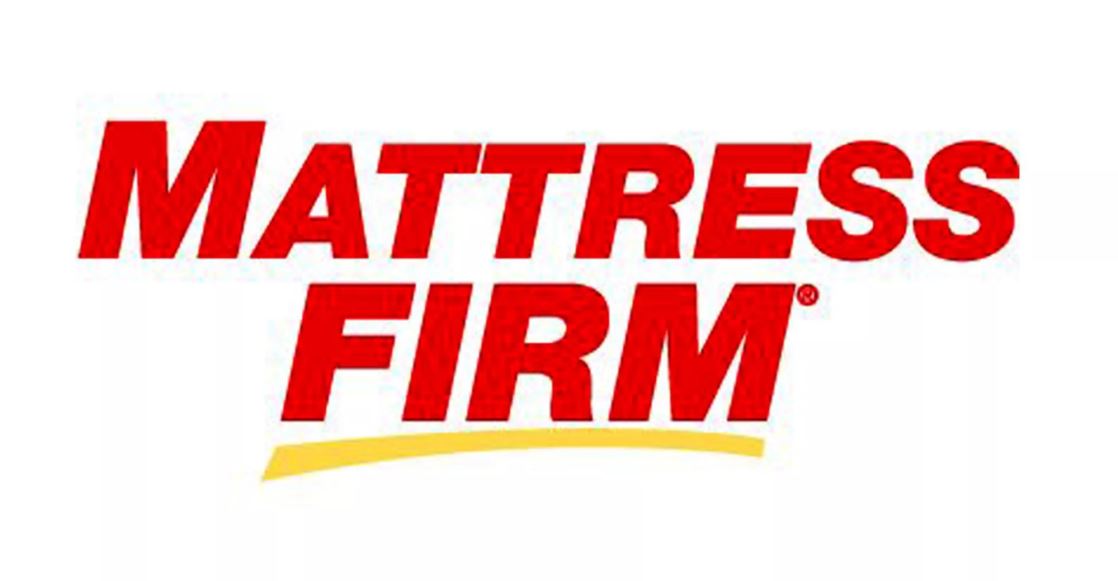Dealing with a leak under your bathroom sink can be a frustrating and messy experience. Not only does it waste water and potentially lead to mold growth, but it can also damage your cabinets and flooring. However, with the right tools and knowledge, you can easily fix a leak under your bathroom sink on your own. In this article, we will guide you through the process of fixing a leaky bathroom sink and provide tips on how to prevent future leaks. How to Fix a Leak Under Your Bathroom Sink
Before we dive into the steps of fixing a leak under your bathroom sink, it's important to understand the common causes of leaks in this area. The most common cause is a loose connection between the sink and the drainpipe. This can happen over time due to regular use or if the sink was not installed properly. Another common culprit is a faulty or worn out seal, which can occur around the drain or the faucet base. Common Causes of Leaks Under Bathroom Sinks
The first sign of a leak under your bathroom sink is often a pool of water on the bottom of the cabinet. You may also notice a musty odor or see mold or mildew growing. Another indicator is an increase in your water bill. If you notice any of these signs, it's important to address the leak as soon as possible to prevent further damage. Signs of a Leak Under Your Bathroom Sink
If the leak is minor and you have some basic plumbing skills, you may be able to fix it yourself. The first step is to turn off the water supply to the sink. Then, inspect the connections between the sink and the drainpipe and tighten any loose parts. If the leak is coming from the seal around the drain, you can try applying plumber's putty or silicone sealant to create a watertight seal. For a leak at the base of the faucet, you may need to replace the O-ring or the entire faucet. DIY Solutions for a Bathroom Sink Leak
If the leak is more severe or you don't feel comfortable fixing it yourself, it's best to call a professional plumber. They have the expertise and tools to pinpoint the source of the leak and provide a long-lasting solution. They can also check for any other potential issues and make necessary repairs or replacements to prevent future leaks. Professional Plumbing Services for Bathroom Sink Leaks
The best way to deal with a leak under your bathroom sink is to prevent it from happening in the first place. Regularly inspect your sink and check for any loose connections or signs of wear and tear. If you notice any issues, address them immediately. It's also a good idea to avoid using harsh chemicals or abrasive cleaners, as they can damage the seals and cause leaks. Preventing Leaks Under Your Bathroom Sink
If you're still experiencing a leak under your bathroom sink even after attempting to fix it, there may be a more complex issue at hand. It's important to troubleshoot the problem to determine the root cause. Check all the connections and seals, and if everything seems to be in order, there may be a problem with the pipes or the sink itself. In this case, it's best to call a professional plumber for a thorough inspection and repair. Troubleshooting a Bathroom Sink Leak
To fix a leak under your bathroom sink, you'll need a few basic tools including an adjustable wrench, pliers, a screwdriver, plumber's putty or silicone sealant, and possibly a new O-ring or faucet. It's also helpful to have a bucket and towels on hand to catch any water that may leak during the repair process. Tools You'll Need to Fix a Bathroom Sink Leak
The first step in repairing a leak under your bathroom sink is to identify the source of the leak. This may require turning on the water supply and observing where the leak is coming from. Once you've pinpointed the source, follow the appropriate steps mentioned earlier to fix the issue. Make sure to turn off the water supply before making any repairs and check for any additional leaks once the water is turned back on. How to Detect and Repair a Bathroom Sink Leak
There are several materials that can be used to fix a leak under your bathroom sink, including plumber's putty, silicone sealant, and replacement parts such as O-rings and faucets. These materials are readily available at most hardware stores and are relatively inexpensive. It's important to choose high-quality materials to ensure a long-lasting repair. Common Materials Used to Fix a Bathroom Sink Leak
How to Fix a Leak Under Your Bathroom Sink

The Problem
 If you've noticed water pooling under your bathroom sink, chances are you have a leak. This can be a frustrating and potentially costly issue to deal with, as it not only wastes water but can also cause damage to your home. But don't panic, with a little know-how and some basic tools, you can fix the leak yourself and save some money on hiring a plumber. In this article, we'll walk you through the steps to identify and fix the leak under your bathroom sink, so you can get back to enjoying a dry and functional bathroom.
If you've noticed water pooling under your bathroom sink, chances are you have a leak. This can be a frustrating and potentially costly issue to deal with, as it not only wastes water but can also cause damage to your home. But don't panic, with a little know-how and some basic tools, you can fix the leak yourself and save some money on hiring a plumber. In this article, we'll walk you through the steps to identify and fix the leak under your bathroom sink, so you can get back to enjoying a dry and functional bathroom.
Identifying the Source
 The first step in fixing a leak under your bathroom sink is to identify where exactly the leak is coming from. This may seem obvious, but sometimes the source of the leak is not always where the water is pooling. Start by wiping up any water and thoroughly drying the area under the sink. Then, turn on the water and observe where the leak is coming from. It could be from the faucet, the pipes, or even the drain. Once you've identified the source, you can move on to fixing the leak.
The first step in fixing a leak under your bathroom sink is to identify where exactly the leak is coming from. This may seem obvious, but sometimes the source of the leak is not always where the water is pooling. Start by wiping up any water and thoroughly drying the area under the sink. Then, turn on the water and observe where the leak is coming from. It could be from the faucet, the pipes, or even the drain. Once you've identified the source, you can move on to fixing the leak.
Fixing the Leak
 Depending on the source of the leak, there are a few different methods for fixing it. If the leak is coming from the faucet, you may need to replace the O-ring or washer. If the leak is coming from the pipes, you may need to tighten them or replace any damaged parts. If the leak is coming from the drain, you may need to replace the seal or the entire drain assembly. It's important to use the correct tools and follow the proper steps for each type of repair to ensure a successful fix.
Pro Tip:
Before starting any repairs, make sure to turn off the water supply to your bathroom sink. This will prevent any further leaks or water damage.
Depending on the source of the leak, there are a few different methods for fixing it. If the leak is coming from the faucet, you may need to replace the O-ring or washer. If the leak is coming from the pipes, you may need to tighten them or replace any damaged parts. If the leak is coming from the drain, you may need to replace the seal or the entire drain assembly. It's important to use the correct tools and follow the proper steps for each type of repair to ensure a successful fix.
Pro Tip:
Before starting any repairs, make sure to turn off the water supply to your bathroom sink. This will prevent any further leaks or water damage.
Preventing Future Leaks
 To avoid future leaks under your bathroom sink, it's important to regularly check for any signs of damage or wear and tear. Inspect the pipes, faucet, and drain for any cracks, corrosion, or loose connections. Additionally, make sure to not over-tighten any parts when doing repairs, as this can cause damage and lead to future leaks. And lastly, consider investing in a water leak detector, which can alert you to any leaks before they become a bigger problem.
To avoid future leaks under your bathroom sink, it's important to regularly check for any signs of damage or wear and tear. Inspect the pipes, faucet, and drain for any cracks, corrosion, or loose connections. Additionally, make sure to not over-tighten any parts when doing repairs, as this can cause damage and lead to future leaks. And lastly, consider investing in a water leak detector, which can alert you to any leaks before they become a bigger problem.
In Conclusion
 A leak under your bathroom sink may seem like a daunting issue, but with some basic knowledge and the right tools, you can fix it yourself. Remember to properly identify the source of the leak and use the correct methods for repair. Regularly inspecting your bathroom sink can also help prevent future leaks. By taking care of this small issue, you can save yourself time, money, and potential water damage to your home.
A leak under your bathroom sink may seem like a daunting issue, but with some basic knowledge and the right tools, you can fix it yourself. Remember to properly identify the source of the leak and use the correct methods for repair. Regularly inspecting your bathroom sink can also help prevent future leaks. By taking care of this small issue, you can save yourself time, money, and potential water damage to your home.











































































